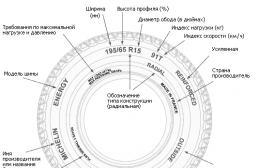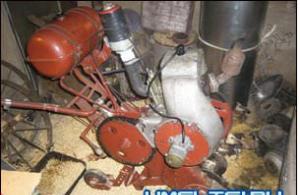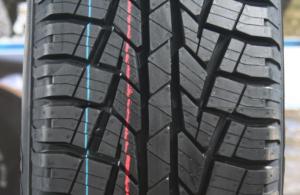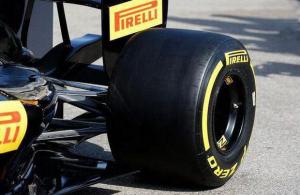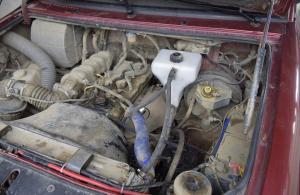The lubricating fluid, which is poured into the gearbox, drive axle or transfer case, is usually called transmission. The classification of such a product is in many ways similar to the classification of engine oil, which, to some extent, simplifies the buying process. When choosing a gear oil, you should focus on a number of criteria:
- Viscosity.
- Presence of anti-corrosion additives.
- Performance.
- Lubrication efficiency.
- Thermal oxidative capacity and other factors.
Oils for transmissions (as well as for the engine) are individually labeled, the decoding of which requires certain knowledge from the car owner. A label is attached to the box with the working fluid, which indicates the classification (API or SAE). Also, the MIL specification or the ZP classifier is often spelled out on the piece of paper. But that's not all. Some manufacturers indicate certain tolerances as basic information.
Today, every gear oil must meet the requirements of the SAE J306 classification (the world's accepted standard). 75W90 is the most demanded type of grease with an optimal level of viscosity.
Viscosity parameters 75W and 90
When buying a gear oil, consider existing SAE (TM) products. All of them differ according to several criteria - type, viscosity level and purpose. This article discusses 75W90 oil, so we will focus specifically on its features and characteristics.
Decoding:
- 75W - a parameter that reflects the "winter" characteristics of the working fluid. It shows the level of fluidity of the oil when the temperature drops below 0 degrees Celsius. The lower the number in front of the "W" symbol, the more fluid the transmission oil is. For the liquid in question (75W90), the lower threshold is 40 degrees below zero.
- 90 is a "year" indicator by which one can judge the upper temperature limit for a given type of grease. To determine this parameter, you must have a special table at hand. For 75W90 oil, the upper temperature limit is +35 degrees Celsius.
What explains the popularity of this type of gear oil? Its peculiarity lies in its versatility and optimal temperature range. But this is only the "tip of the iceberg", because the parameters of the liquid, in many respects, depend on the characteristics of the composition. With an increase in viscosity, the power of the gearbox decreases, due to the additional energy consumption, for squeezing out the fluid from under the gear teeth.
The main disadvantage of viscous oil is the fact that the liquid thickens at subzero temperatures. In turn, a working fluid with a lower viscosity copes well with the cold, and ensures the normal operation of the transmission. To eliminate negative factors and achieve better performance, additives are increasingly being used.
For car owners living in regions with moderate temperatures, gear oil with a viscosity of "90" is more useful. For residents of hot regions, or when operating a machine under extreme loads, the best option is a lubricating composition with a viscosity index TM (140). The viscosity level of such a liquid, at 100 degrees Celsius, should not be less than 24 sq. mm / s.
High-quality gear oil solves a number of tasks:
- Effectively removes excess heat from the elements of the mechanism.
- Reduces energy losses and increases efficiency.
- Allows you to avoid galling, friction, scoring and other damage that occurs during operation.
- Reduces vibrations and extraneous noise possible during the operation of gears.
It is worth considering that 75W90 oil from different manufacturers may differ in its characteristics. Accordingly, in a small range, the price will also change. In addition, the product in question belongs to synthetic oils, although some manufacturers write "semi-synthetics" on the label. In practice, this gear oil is classified as synthetic. The difference is only in the amount of synthetic substance (20-40 percent) or additives (2-15%).
Oils are classified by both API and SAE systems. In the first case, the product is marked with the inscription "GL", which stands for "TM" (transmission oil).
Performance
Thanks to API classification, it is much easier to assess the quality of a hydraulic fluid in terms of performance. Six categories are distinguished here, each of which has an individual index. With the help of the latter, it is possible to determine the scope of application of the liquid and the quality of the product.
For passenger cars, transmission oils of the GL-4 and GL-5 types are used, which corresponds to the domestic specifications TM-4 and TM-5, respectively.
Let's consider each type in more detail:
- GL-4 is an oil suitable for gears operating under medium load conditions. The working fluid is used in a mechanical "box" and units with spiral-canonical gears. TM-4 are recommended for use in hypoid gears, when driving at high speeds (subject to minimum or average torque).
- GL-5 is an oil for gears (most often of the hypoid type) operating with increased load and low torque. When filling with such a liquid, a short-term shock load is allowed. In addition, the peculiarity of the composition is the presence of a special additive containing phosphorus and sulfur.
In recent years, 75W90 oil marked GL-4/5 has become more and more in demand. The presence of two numbers in the designation indicates the possibility of using the composition in mechanisms operating under various loads.
The nuances of the MIL specification
When choosing an oil for a transmission, one may come across another type of specification - MIL. If we consider the parameter from the standpoint of 75W90 oil, this indicator will have the following form - MIL-L 2105 "X" (instead of "X" is A, B or C). An analogue of the lubricant composition is API GL-4 or GL-5.
ZF designation
Sometimes the symbol "Z" is put on 75W90 oil. In practice, the Z classification system is applied to vehicle transmissions of all types. At the same time, the oil itself is marked with various symbols (letters and numbers). As an example, the ZF TE-ML 01.
What is the difference between GL-4 and GL-5 oils 75W90?
The main feature of the considered working fluids is the scope of application. So, in GOST 17479.2-85 it is stated that GL-4 is a type of oil that is suitable for mechanisms with hypoid and conical type gears. The temperature limits are 150 degrees Celsius, and the voltage limits are 3000 MPa. In other words, this type of transmission oil is used for front-wheel drive vehicles.
The situation is different with GL-5 oil, which is suitable for hypoid gears that can withstand increased loads. Scope of application - gearboxes with hypoid type gears. A distinctive feature of the composition is considered to be the best protection in conditions of increased loads and pressure.
What mistakes are made when choosing 75W90 oil?
It should be remembered that in GL-4 the amount of phosphorus-sulfur additives is half that in GL-5. The peculiarity of such additives is to create a high-quality coating that protects against wear, providing greater strength and reliability of the surface. That is why mistakes when choosing a working fluid can cause wear of an element made with the use of soft metal.
If GL-5 is poured into the gearbox (if it is necessary to use GL-4), copper chips appear, which are removed from the copper synchronizers. So, these two types of oils are not interchangeable, because they have different purposes and have individual characteristics.
Video: How not to be mistaken when choosing a gear oil (the difference between API GL-4 and GL-5)
If the video does not show, please refresh the page or
The gear oil class has long been the most conservative. In a gearbox or axle, the operating conditions of the oil are milder than in the engine - there are no temperature changes or exhaust gas intrusion. Therefore, gear oils were a mineral base with mineral additives designed to prevent the gears from welding.
In the Soviet Union, the appearance of sulfurized gear oils occurred with the commissioning of the T-34 tanks, the highly loaded transmission of which simply could not withstand work on the then nigrol (in fact, petroleum distillate mixed with resins). It is sulfur and phosphorus that provide mineral gear oils with such a characteristic odor.
Varieties of transmission oils
However, over time, and transmissions have undergone changes. First of all, synchronizers appeared - and their bronze rings in high-sulfur oils were destroyed, and EP additives had to be developed.
The mass distribution of hypoid gears (a hypoid gearbox is an angular gearbox, the axles of the driving and driven gears of which lie in different planes), in which high contact loads required oils with extremely high extreme pressure properties, required the creation of a separate class of gear oils. With the tightening of environmental requirements, this even affected transmissions - low-viscosity synthetic oils entered the arena, reducing mechanical losses in transmissions.
Modern classification
As with engine oils, the accepted classification for transmissions is the American Petroleum Institute (API) standards.
Oils of the GL-1 group are mineral-based lubricants for lightly loaded transmissions with a minimum additive package. Such oils are not used in any modern car. GL-2 oils richer in antiwear additives are also irrelevant for motorists - they are used in low-speed worm gearboxes.
For medium loads in low-speed transmissions, oils of the GL-3 group are intended. This group of gear oils is used in manual transmissions and helical bevel gearboxes of drive axles due to the increased content of antiwear additives, but they are relevant for freight transport.

In passenger gearboxes, oils of the GL-4 group operate, containing both antiwear and antifoam additives. At high speeds, the gears of the gearbox whip up foam, which significantly reduces the quality of the lubricant - and after all, transmissions are lubricated exclusively by splashing. In gearboxes, such oils are applicable with restrictions - they are poured only into spiral-bevel gears or hypoid gears with an extremely small axle offset.
Oils of the GL-5 group are intended exclusively for hypoid gears. They have the highest content of antifriction and extreme pressure additives, and in some cases oils of this class are also poured into gearboxes. However, keep in mind that not all GL-5 commercial oils are compatible with synchronizers (this primarily concerns mineral oils). To clearly indicate the possibility of working with synchronized manual transmissions, such oils are labeled as GL-5 + or GL-5 SL.
"Outside the standard" designations such as GL-4 + or GL-4/5, which are used for oils that have complex packages of extreme pressure additives, which make it possible to use them in hypoid gears, but still maintain full compatibility with synchronized manual transmissions. First of all, such oils are relevant for front-wheel drive cars, where the gearbox and differential are located in the same crankcase - in the Elf and Tranself NFJ transmission oils line, and Tranself NFP are labeled as GL4 +.
Video: Gear oils
Main characteristics of transmission oils
The viscosity of gear oils is classified according to the SAE standard, familiar from engine oils. For transmission oils, the numerical designations of the viscosity ranges are shifted relative to the designations of the engine oils. Low-temperature and high-temperature viscosity 75W-85 is close to 0W-30 engine oil.
Playing with the viscosity of oils in a transmission has as many limitations as engine oils. A thinner oil will improve the operation of the gearbox in winter, while the transmission is not warmed up, but at the same time, in operating mode, it will provide the strength of the oil film below the required one (saving the resource at the beginning of the movement, we will simultaneously reduce it after warming up).
Thicker oil is poured into worn gearboxes and gearboxes to mask the characteristic howl - but it splashes worse and penetrates the gaps worse, which in theory will increase wear until the gaps are sufficient for this oil. But, since such measures are resorted to even with significant wear, filling with a thicker oil is really necessary to preserve the residual resource of the transmission.

The main characteristic of transmission oil is the minimum welding load. This value determines at what point EP additives will stop working, and local overheating and welding of the surfaces of the gear teeth will begin. It is determined experimentally on a special machine, where the loaded cone rotates with an emphasis on several steel balls - the control load becomes the one when the balls are welded to the cone.
Non-standardized indicators for scuffing and wear demonstrate the quality of the oil under gentle conditions - the load is estimated at which the transmission is still operating, but with destruction of the tooth surfaces (scuffing), and the change in the content of iron and non-ferrous metals in the oil (wear) is measured. First of all, wear on non-ferrous metals is interesting, since synchronizers have a lower margin of safety than gears.
The best representatives of their class
For a correct comparison, we will take for comparison modern gear oils with a viscosity of 75W-90 - they are universal, having both a sufficient high-temperature viscosity and retaining fluidity in winter.
Motul Gear 300

Full synthetic, ester based, heavy duty certified to US Department of Defense (MIL-L-2105D). It is classified as GL-4 / GL-5 by the manufacturer. Creates a tough oil film that can withstand higher loads than other synthetic oils. This also provides one of the highest welding loads in its class. For powerful cars, Motul Gear 300 is the best choice. It also has excellent low temperature fluidity, which is good for Russia.
Castrol Syntrax Universal Plus

This oil is cheaper than Motul, but comes close to it in terms of protection under extreme loads. At the same time, the viscosity at low temperatures, although it fits into the requirements of the SAE classifier for the declared values, is higher than that of the French competitor, which is not the best option for a harsh winter. At the same time, this oil retains its viscosity better when heated, and this adds a couple of kopecks to the transmission resource box. Not a bad choice for a thrifty owner who expects to use the car for a long time.
Liqui Moly Hochleistungs-Getriebeoil
Traditionally, for the company, transmission oil has a difficult to pronounce name, but it is interesting, first of all, for its powerful antifriction package and stable viscosity - this oil is capable of saving fuel at high mileage. The API group is defined by the manufacturer as GL-4 + (GL-4 / GL-5) - it can be confidently cast into gearboxes on both front and rear wheel drives. The oil also boasts ZF, Volkswagen and Ford approvals.
Mobil Mobilube 1 SHC

Oil of the GL-5 group, combining a powerful package of extreme pressure additives with a careful attitude to synchronizers made of non-ferrous metals. It is interesting to see on the label the approval of Mercedes-Benz or Scania and the Yaroslavl Motor Plant for boxes working in conjunction with YaMZ diesel engines.
One of the highest indicators of oil film strength, high welding load and scuffing are parameters that characterize the oil's performance in harsh conditions. Under average statistical conditions, it will turn out to be even more effective than Motul, losing to it when heated above 100 degrees, when the viscosity drops sharply. In winter, it is thick - it wins over Castrol in this regard.
Video: Which gear oil is better, test 1
Seal
Russian motor and transmission oils are greatly underestimated by drivers who are confident in the overwhelming advantage of foreign oils. We have already talked about the comparison of Lukoil motor oils with good foreign oils and proved that the Russian product is not inferior to most competitors. Now we will tell you about Lukoil 75w90 gear oil.
What Lukoil produces
The company produces four types of oil with this viscosity:
- SYNTH BSX 75W-90.
- UNI S 75W-90.
- TM-4.
- TM-5.
The first two types of oil on a fully synthetic basis and on API class GL-5. Lubricating fluids of this class are intended for use in hypoid gears, transfer cases and axles. They are not suitable for gearboxes due to their high sulfur content, which forms an overly strong outer layer, leading to damage to the metal of the gears. At the same time, the oil of the second type can be used in gearboxes of cars and commercial vehicles, but only in a mixture with a synthetic lubricant of GL-4 standard.
Oils of the third and fourth types differ according to the API standard. ТМ-4 complies with GL-4 standard, and ТМ-5 complies with GL-5.
They are produced both on a mineral and semi-synthetic basis. Mineral transmission oils of the TM series are ideal for those regions where the temperature in winter drops below 25 degrees, because the mineral base in severe frost hardens much less than synthetic. All four types of oil are fully compatible with each other, so they can be mixed in any ratio. There will be no negative consequences for the units, even as a result of mixing mineral and synthetic oils.
A distinctive feature of all Lukoil 75w90 lubricating fluids is a very long interval between oil changes in the units. According to most of the main indicators, all oils of this viscosity from Lukoil are not inferior to most similar lubricating fluids from leading companies, such as:
- Castrol.
- Total.
- Shell.
- MANNOL.
Correct use of gear oil
All four types of LUKOIL transmission oil are very popular among those who have to operate the car in difficult conditions. That is, among the owners of all kinds of jeeps, SUVs, vans and trucks.
Usually, such lubricants are poured into drive axles and transfer cases, and not only Russian and Soviet cars, but also foreign cars produced at the beginning of the 21st century, not to mention foreign cars from the 80s or 90s of the last century. These oils are rarely poured into gearboxes, because it is necessary to mix with GL-4 lubricating fluids from Lukoil. Often, mixing seemingly good oils of close standards, but from different manufacturers, led to the transformation of the lubricating fluid into some strange substance that quickly kills the unit. Correct use of the oil is equally important.
As we already wrote, this is the compliance of the oil according to SAE and API with the requirements set by the car manufacturer. There are frequent cases when inexperienced drivers poured good oil into the manual transmission, but inappropriate in these parameters, and then they began to tell everyone that they had been sold bad oil.
Another criterion for the correct use of oil is the dependence of the service life on the condition and wear of the unit. If the transfer case, axle or other unit is in perfect working order, then Lukoil 75w90 transmission oil will serve 50-80 thousand kilometers without any problems, and with careful use of the machine its resource can reach 100-120 thousand kilometers. Such a service life is comparable to good foreign oils, because the basis of the additive package (sulfur-phosphorus components) is the same for them. And the base Soviet and Russian mineral and synthetic oil is still considered one of the best in the world.
If the unit is badly worn out or damaged, then there can be no question of any long service life of the oil, regardless of what is poured into it.
Equally important are factors such as heavy loads and the correct start of movement. The higher the load on the vehicle or the worse the terrain and fuel, the less the transmission oil will last. Therefore, in difficult conditions, it is changed every 30-60 thousand kilometers, which allows you to maximize the life of the unit. Not every driver knows that in winter it is necessary to start driving very slowly and smoothly. After all, the oil thickens due to low temperatures and cannot normally lubricate the rubbing parts. As it moves, it heats up and acquires the desired viscosity, after which you can add speed.
Reviews from 75w90
There are three ways to find gear oil reviews:
If your friends use Lukoil lubricants and do it right, then talk to them. Lukoil engine and transmission oils, if they are suitable for SAE and API, and are also original, are not much inferior to foreign counterparts of the same class. It is clear that one cannot compare mineral and synthetic oils, or fluids that differ in viscosity or API class, but among substances of the same class and one tolerance group, Lukoil oils are no worse than foreign lubricants.
- Drome;
- Drive 2;
- Otzovik;
- Oil Club;
- UAZBUKA.
The overwhelming majority of reviews about Lukoil 75w90 gear oils are positive, and this applies not only synthetics or semisynthetics but also mineral oil. Car owners note the high quality of the product and the low price. Negative reviews are associated with the wrong choice or use of oil, as well as with the use of an unoriginal product, because the most honest users report that they bought the oil not from an authorized dealer or it is packed in a strange container.
How to distinguish original Lukoil 75w90 oil
There are several signs that will help identify the original oil and distinguish it from a fake:
- lid;
- membrane;
- sticker;
- canister.
The lid of the original Lukoil oil consists of two welded parts - yellow and red. Moreover, it is soldered very high quality - it is impossible to tear off or separate parts without destruction. Under the lid, a membrane made of some kind of transparent rubber and aluminum is soldered into the neck of the canister.
It is impossible to separate the membrane from the cover, it breaks. The sticker on the front and back sides of the canister is not afraid of water, because it is soldered into the plastic of the canister. The canister itself is three-layered, which is clearly visible if you remove the lid, while the seam connecting the two halves is not too even. In addition, both types of this oil are supplied only in containers of 205, 57 and 20 (UNI S 75W-90), 1 (SYNTH BSX 75W-90) or 4 liters (TM-4 and TM-5).

Price
The average price of transmission oils of this viscosity is 350–400 rubles per liter of synthetics and semi-synthetics, or 220–270 rubles per liter of mineral water. Moreover, the larger the container volume, the cheaper the oil. A canister of 4 liters of mineral oil can be taken for 800–1100 rubles, while the same canister of semisynthetics will cost 1200–1500 rubles. The most profitable purchase is in barrels of 205 liters. Such a canister will cost 50-60 thousand rubles (semi-synthetics or synthetics) or 35-45 thousand rubles (mineral water), depending on the place of purchase. In this case, a liter of synthetic or semi-synthetic oil will cost 270–300 rubles, and a liter of mineral oil - 170–210 rubles.
Conclusion
Lukoil 75w90 gear oils are well suited for most modern and used cars. Mineral oils TM-4 and TM-5 are excellent for northern regions, and semi-synthetic and synthetic lubricants of this viscosity are ideal for machines operating in severe conditions. Therefore, they are used by many fans of outdoor activities and outings in the wild.
All car enthusiasts know that special consumables are required to maintain their vehicle. It is engine and transmission oil. Unlike engine lubricant, the second type of consumable is poured into the gearbox. It helps to protect moving gear elements from mechanical wear.
Engine oil needs to be topped up or changed more often. In some new foreign cars, the manufacturer does not provide for the use of transmission oil during maintenance. But when carrying out the repair of the gearbox, as well as in all old-style cars, there is a need to use the presented tool. What kind of transmission oil is better to pour into the gearbox, the advice of experienced auto mechanics will help you figure it out. There are several generally accepted guidelines.
General characteristics of types of oil

In the cold period, the unsuitable oil will thicken quickly. In this case, the system will work "dry" for some time. The surfaces of moving parts will wear out, which will lead to the need for repair or complete replacement of the mechanism.
Because gear oil is consumed slowly, multigrade consumables are very popular. They don't have to be changed every six months. The transmission maintenance costs will be lower.
The rest of the varieties (summer or winter oil) are used under special climatic conditions, when constant ambient temperatures are maintained throughout the year.
Lubricity
Considering which transmission oil is better for VAZ, BelAZ, foreign cars and so on, a few words should be said about the lubricity of these products. There are 6 classes of consumables presented.

Each type of vehicle has its own specific type of substance. For conventional passenger cars, vehicles labeled GL-4 and 5 are suitable. If the car has front-wheel drive, GL-4 will work, and for rear-wheel drive models, GL-5.
There is not much difference between the two classes. GL-5 simply has a higher concentration of EP additives. Therefore, if the car is operated under increased loads, it is better to give preference to this class of lubricant. For normal driving conditions can be used for GL-4 transmission.
Autotest results
Experienced auto mechanics advise using the gear oil recommended by the vehicle manufacturer. Modern foreign cars undergo a series of tests and tests. After extensive research, technologists determine the best gear oil. Therefore, owning a foreign car, you should familiarize yourself with the user manual. The maintenance procedure for this model is clearly spelled out there.

Many domestic drivers are interested in which gear oil is better for Niva, VAZ-2110, VAZ-2114, etc. Experienced auto mechanics claim that GL-4 consumables with a viscosity class of 75w90, 80w85, 80w90 are quite suitable in this case.
It is also important to consider the quality of this product. To avoid premature damage to the gearbox, you need to give preference to products from trusted manufacturers. And in order to avoid buying a fake, it is better to contact licensed dealers.
Synthetic Oil Test Results
Studying the question of which transmission oil is better for the VAZ-2114, Chevrolet Niva, Lada of the latest models, etc., the most popular synthetic products should be considered. If the mileage of the car is low, it is worth giving preference, in the opinion of auto mechanics, to such means as ZIC GF TOP (700 rubles / l), Castrol Syntrans Transaxle (760 rubles / l), Total Trans SYN FE (800 rubles / l) ...

Their fluidity and anti-friction qualities are pronounced. This allows you to use the presented funds in cold winters, high heat in summer. EP additives allow the use of the presented consumables even under conditions of increased load. Experts have singled out these gear oils as being the best synthetic formulation.
User reviews of synthetic oils
Studying the question of which transmission oil is better for VAZ-2110, VAZ-2114, "Lada" and other domestic car brands, you should consider customer reviews. They argue that by using the tools listed above, the life of the gearbox can be significantly extended.
At the same time, the operation of this system becomes practically silent and easy. Engines run faster and vibration is reduced. The car starts up easily even in winter. The only drawback is the high cost of such funds. But during operation, the price of oil turns out to be justified. It is better to purchase a reliable tool than to subsequently carry out expensive transmission repairs.
Expert opinion on semi-synthetic oil
Studying the question of which transmission oil is better for Chevrolet Niva, G8, Tens and other domestic cars with low mileage, one should take into account expert advice on semi-synthetic products. Their cost will be less than that of synthetic products, but not by much.

If a new domestic car has a low mileage, consumables of the presented type will be preferable. Experts call LIQUI MOLY Hipoid Getriebeoil (750 rubles / liter), ELF TRANSELF NFJ (600 rubles / liter), THK TRANS GIPOID SUPER (900 rubles / liter) the best in this area.
Each tool is designed for a specific type of gearbox. But there are also universal varieties. Auto mechanics highlight the high performance characteristics of the presented tools.


